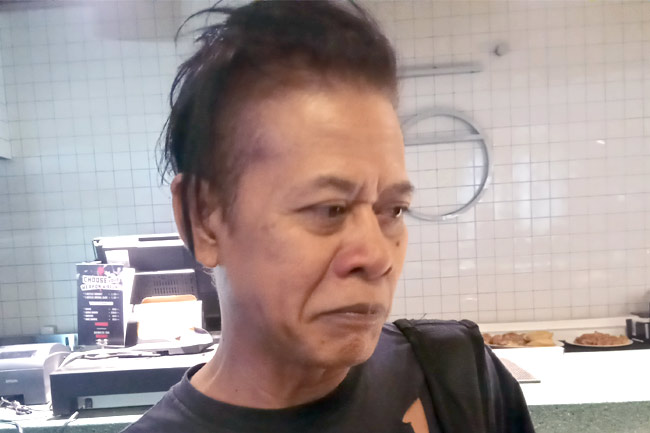
Robert Draws – Tony Q Rastafara is a well-known Indonesian reggae singer who holds a deep love for both music and visual art. His admiration for the arts is equally divided between creating music and painting. Before gaining recognition as Indonesia’s reggae icon, Tony had already developed a passion for drawing at an early age. In his childhood, he participated in drawing competitions, supported by his teachers. His interest in visual art was evident even before music came into his life.
Despite his early love for drawing, Tony’s dreams of pursuing a career in the arts faced several obstacles. His initial aspiration was to attend an art school, but financial constraints made it difficult for his family to support this path. Instead, his parents encouraged him to attend a technical high school (STM), where he could learn practical skills and secure a stable job after graduation. Although he had no formal education in music at this point, Tony discovered music during his first year in STM, which would later change his life entirely.
Tony reflects on how his passion for the arts has remained a consistent force in his life. He said, “The artistic spirit never fades. I play music, I paint, and I keep doing both.” This statement encapsulates his dedication to both music and visual arts, which have shaped his life and career. Tony made this remark during his painting exhibition titled “To Be Wise” at the 75 Gallery in Mampang Prapatan, South Jakarta, held on February 8, 2025.
Tony was born on April 27, 1961, in Semarang, Central Java. As a child, he had an intense interest in art, but due to his family’s financial limitations, he was unable to attend an art school. Instead, Tony enrolled in STM and studied technical subjects to secure employment quickly. Although his focus was on practical training, the desire to pursue a career in the arts remained deep within him.
Before pursuing a full-time career in music and painting, Tony worked as a private employee and a designer in a printing company. Despite the stable job, Tony was not content. He longed to study the arts. Although he tried to save money to return to school, his boss discouraged him from pursuing his passion. Eventually, he left his job and became a street performer and ticket seller. This decision marked the beginning of his serious commitment to music.
“Read about: To Be Wise: A Journey Through Artistic Wisdom”
Tony’s breakthrough in music came in 1982, when he won a music competition, which motivated him to continue his pursuit of music. The following year, in 1983, Tony also started learning to paint in Blok M, South Jakarta. Over time, his love for both painting and music became intertwined, and these two forms of creative expression became his everyday activities.
Tony has since created hundreds of paintings, many of which have been sold. More than 50 of his paintings are now part of private collections. His artwork reflects his creativity, dedication, and passion for expressing his ideas through visual means. On top of that, he has written an enormous number of songs, though he admits he has lost count of how many. His passion for creating music and art knows no bounds, and both practices serve as important outlets for his creative energy.
While he has enjoyed success in both the music and art worlds, Tony has never viewed his work as a commercial endeavor. “An artist should not have expectations,” he once said. “The same goes for songwriting. A song will be judged by the audience, and paintings are no different.” This philosophy emphasizes that for Tony, the process of creating art and music is more about self-expression and less about financial gain.
“Read more: Jessica Lane Wins Miss Earth 2024, A Look at Her Journey to Victory”
Tony’s artwork, much like his music, often explores profound themes of peace and struggle. One of his most notable works features portraits of Indonesia’s fourth president, Abdurrahman Wahid (Gus Dur), and anti-apartheid revolutionary Nelson Mandela. These paintings exhibit incredible attention to detail and are reflective of Tony’s commitment to portraying figures who represent change and hope.
In addition to his painting, Tony’s love for visual art can be seen in his song “Lukisan Cinta” (Painting of Love), written in 1999. The song articulates Tony’s belief that differences should coexist in harmony. He uses the metaphor of a painting to suggest that when contrasting elements come together, they create beauty. According to Tony, these contrasts, whether in art, music, or life, can lead to a greater understanding of the world.
Through his music and his art, Tony Q Rastafara aims to spread peace, love, and unity. His works reflect his hopes for a more harmonious world where differences are embraced and celebrated. Whether through the rhythms of his reggae songs or the colors on his canvas, Tony continues to inspire others to see the beauty in diversity. His dedication to both music and painting serves as a testament to the power of the arts in bringing people together.